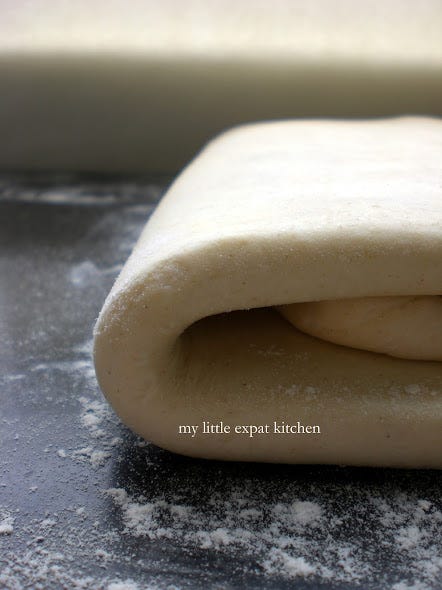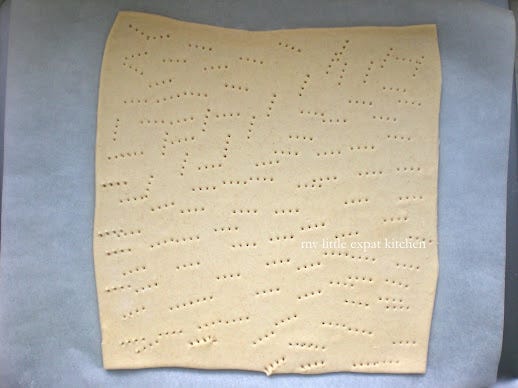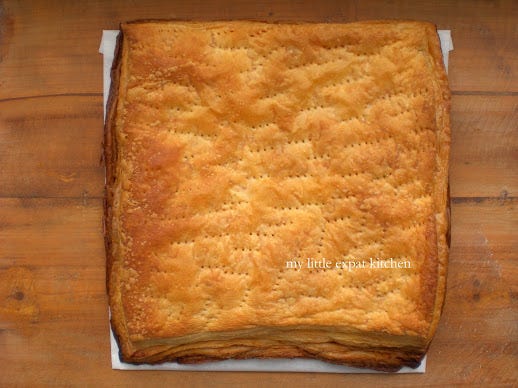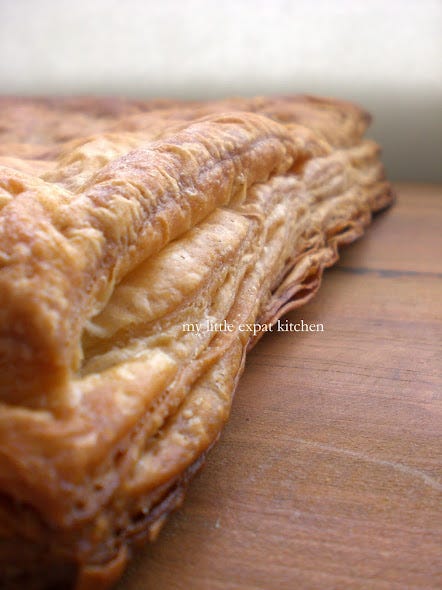Published originally on my blog on 24 January 2013
I was in the mood to make something with my hands. To create something out of nothing, not unlike a painter working on a blank canvas. I needed something to be proud of, something to show off and say “look, I made this myself, from scratch”.
Flour, water, butter. Lots of butter. Whole lots of butter. So much butter that no one person should consume on a regular basis. And yet, I needed even more. For to make puff pastry, you need to feel like butter is your friend and treat it as such. It will try to escape, to soften, to ooze out, but you need to contain it, know how and when to handle it.
Puff pastry is the queen of doughs. It’s not a difficult one to make, not when you can be patient, when you know some tricks and tips and when you understand the idiosyncrasies of her majesty, the pâte feuilletée.
This dough requires time—time to rest. It requires cold—cold hands, cold working area. It requires a good rolling pin and a little elbow grease. It will consume you for half a day, you need to pay attention to it, but while it is resting in the fridge, you’ll get a rest too and have the chance to tend to other things. And then, you can enjoy the glory of its hundreds of layers, the puff, the rise, the buttery goodness.
Puff pastry is not for the faint-hearted. If you love making doughs, then you’re going to love making this one too. If not, you can certainly find ready-made puff pastry that is good, when it’s made with actual butter that is. If you’re not one to shy away from a pastry challenge, this one’s for you.
Pâte feuilletée, the French word for puff pastry which translates to layered dough, is made with flour, water and butter and it does not contain any kind of leavening agent.
It is made up of three parts: the détrempe, the beurrage and the pâton. The détrempe is a basic dough, the beurrage is a block of butter and the pâton is a package of dough formed by combining the first two parts. The beurrage is incorporated into and dispersed throughout the détrempe through a number of rolls and folds, named tours (turns), and the result is a laminated dough, a dough that has alternating layers of dough and butter pressed together.
The layers of butter are those that make the dough rise in the oven. Butter is made of milk/fat solids and water. During baking, the water content from the butter turns to steam and pushes up the successive layers of dough, creating an airy, lightened structure. The fat from the butter is then absorbed into the layers of dough and cooks them, leading to the crisp texture and an increased stability of the light structure. The cooking of the butter’s milk/fat solids is what causes the puff pastry to take on a golden-brown color and also gives it its delicious buttery flavor.
French Puff Pastry (Pâte Feuilletée)
Below you’ll find useful tips for making puff pastry that will make your life easier. Take care to read through carefully and comprehend them before making the pastry and make sure to refer back to them while making it. The various notes throughout the recipe are terribly important as well.










